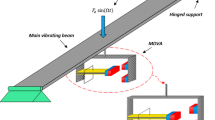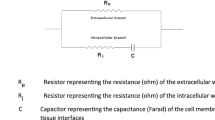Radiofrequency exposure at the mobile connection frequency (1 GHz) at different energy flow densities, 5 μW/cm2 (2-fold below the maximum permissible level) and 50 μW/cm2 (5-fold surpassing this level), caused a reduction of motor activity in unicellular hydrobionts Spirostomum ambiguum Ehrbg infusoria. In all cases, the effect was similar by the intensity and developed in a jump-wise manner after exposure of a certain duration, after which did not increase with prolongation of the exposure. The duration of radiofrequency exposure safe for the object varied signifi cantly: 8–9 h and 10 min at 5 and 50 μW, respectively. These innovation data on harmful biological effects of very low radiofrequency exposure (5 μW/cm2), the threshold form of biological reaction, presence of “safe” periods of exposure, and the data demonstrating a clear-cut relationship between these periods and energy flow density are interesting from theoretical viewpoint and in connection with the problem of evaluating permissible levels of radiofrequency exposure of biological objects.
Similar content being viewed by others
References
E. V. Bakhvalova, E. I. Egorova, and N. A. Tushmalova, Biol. Vnutr. Vod, No. 2, 100–104 (2007).
I. B. Bychkovskaya, R. F. Fedortseva, P. V. Antonov, et al., Specific Cellular Effects and Somatic Aftereffects of Low Dose Irradiation [in Russian], St. Petersburg (2006).
Hygienic Requirements to Location and Exploitation of Terrestrial Mobile Radioconnection Means. Sanitary Epidemiological Regulations and Standards SanPiN 2.1.8/2.2.4.1190-03 [in Russian], Moscow (2003).
Yu. G. Grigoryev, Radiats. Biol. Radioekol., 45, No. 4, 442–450 (2005).
Yearbook of the Russian National Committee for Protection from Nonionizing Radiations, 2008: Collected Papers, Ed. O. A. Grigoryev [in Russian], Moscow (2008).
O. P. Melekhova, E. I. Sarapul’tseva, T. I. Evseeva, et al., Biological Surveillance of the Environment: Bioindication and Biotesting, Ed. O. P. Melekhova, et al. [in Russian], Moscow (2008), p. 216.
M. Morekhanova, S. Revzin, I. Rodvikova, and A. Somov, Yearbook of the Russian National Committee for Protection from Nonionizing Radiations, 2008: Collected Papers, Ed. O. A. Grigoryev [in Russian], Moscow (2008), pp. 106–115.
V. G. Petin, Biophysics of Nonionizing Physical Factors of the Environment [in Russian], Obninsk (2006), p. 94.
E. I. Sarapultseva, Radiats. Biol. Radioekol., 48, No. 3, 346–348 (2008).
E. I. Sarapultseva, Yu. V. Igolkina, and A. V. Litovchenko, Byull. Eksp. Biol., 147, No. 4, 411–413 (2009).
E. I. Sarapultseva, R. F. Fedortseva, and I. B. Bychkovskaya, Med. Radiol. Radiats. Bezopasn., 54, No. 6, 11–15 (2009).
G. Naiecz-Jawecki, T. Wójcik, and J. Sawicki, Environ. Toxicol., 23, No. 1, 52–58 (2008).
Author information
Authors and Affiliations
Corresponding author
Additional information
Translated from Byulleten’ Eksperimental’noi Biologii i Meditsiny, Vol. 151, No. 4, pp. 459–462, April, 2011
Rights and permissions
About this article
Cite this article
Sarapultseva, E.I., Igolkina, J.V. Experimental Study of Relationship between Biological Hazards of Low-Dose Radiofrequency Exposure and Energy Flow Density in Spirostomum Ambiguum Infusoria Exposed at a Mobile Connection Frequency (1 GHz). Bull Exp Biol Med 151, 477–480 (2011). https://doi.org/10.1007/s10517-011-1361-5
Received:
Published:
Issue Date:
DOI: https://doi.org/10.1007/s10517-011-1361-5




